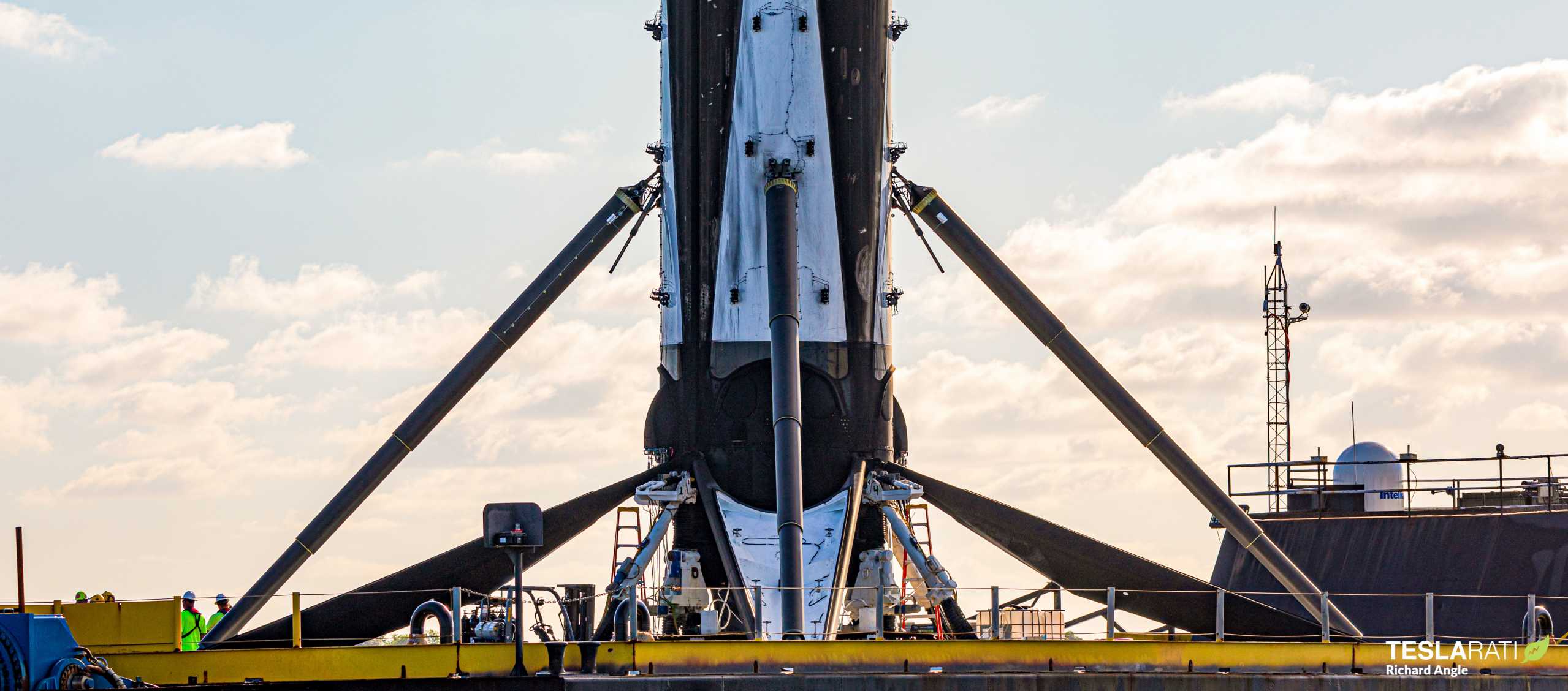
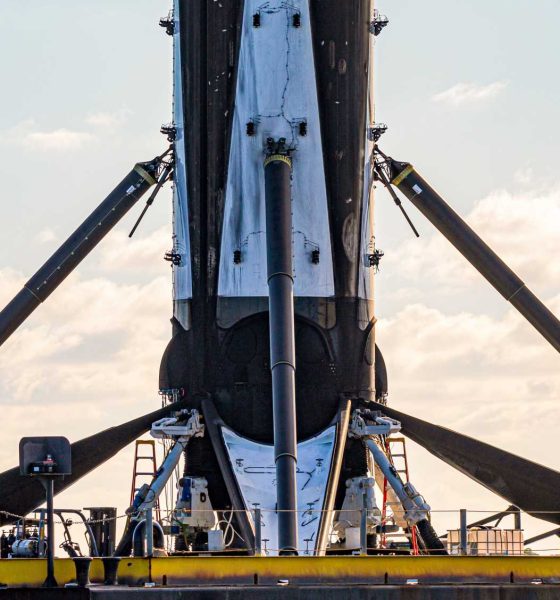
News
SpaceX’s third Starlink launch in three weeks is just around the corner
SpaceX is just a few days away from Falcon 9’s third Starlink internet satellite launch in 22 days, also the second commercial Starlink rideshare mission in two weeks.
If successfully, Starlink v1.0 L9 mission will mark nearly six hundred internet satellites launched by SpaceX since the company began dedicated missions in May 2019, as well as ~530 operational v1.0 spacecraft launched since November 2019. According to SpaceX executives, the company can begin rolling out internet service to customers via “UFO on a stick” user terminals once 14 v1.0 launches have been completed, meaning that the constellation could be just five launches away from generating consistent revenue after the next batch of satellites are safely in orbit.
Meanwhile, SpaceX debuted a separate method of generating revenue from Starlink launches just ten days ago when it successfully launched three Planet imaging satellites on top of 58 new Starlink spacecraft. While the revenue from booking a few satellites to launch on Starlink missions is likely nowhere close to covering the actual material cost to SpaceX, it can certainly help offset the extraordinarily capital-intensive process of constellation build-out. Less than two weeks after SpaceX’s Starlink rideshare debut, the very next launch is scheduled to include two commercial imaging satellites – this time for BlackSky Global.

Built by Washington startup LeoStella, the two imaging satellites scheduled to launch on Starlink-9 arrived in Cape Canaveral, Florida on June 1st in time to be processed and installed on top of a stack of either 58 or 60 Starlink internet satellites.
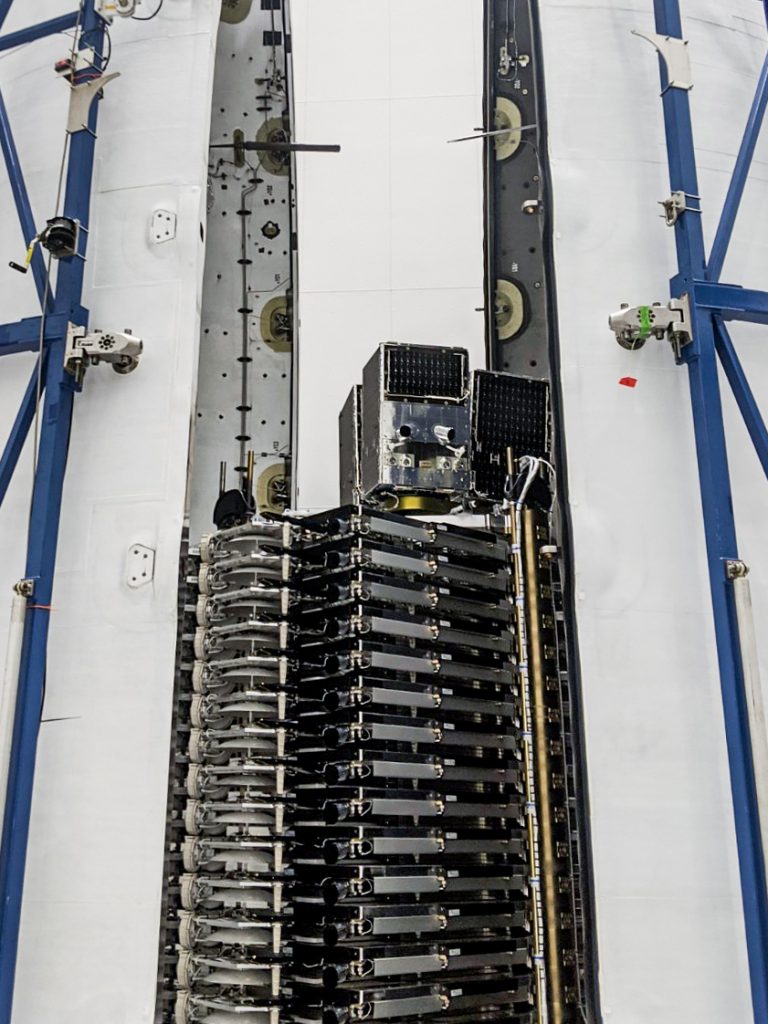
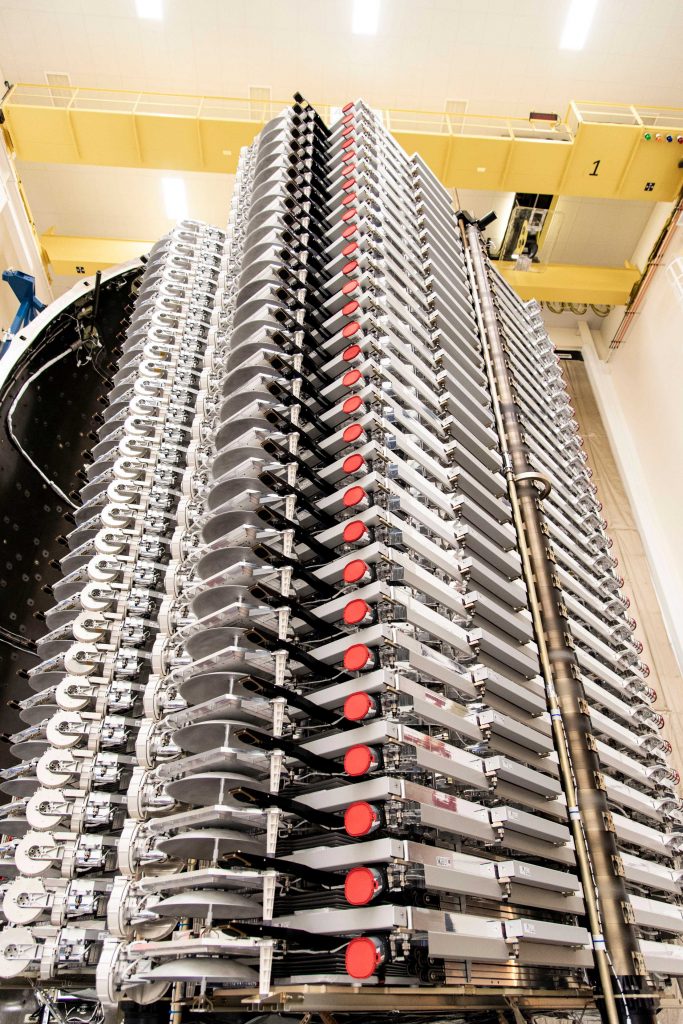
Approximately half as large as the three ~110 kg (240 lb) SkySats SpaceX launched on June 13th, LeoStella’s first two BlackSky satellites are believed to weigh around 55 kg (~120 lb) each and are capable of imaging the Earth’s surface at a resolution of ~1m per pixel from a nominal 500 km (310 mi) orbit. BlackSky’s LeoStella contract includes another 18 such satellites, all of which could (but probably wont) launch on future Starlink missions.
Smallsat constellation operators typically aim for diversity when launching more than a handful of satellites, ensuring that a hypothetical launch vehicle failure wont delay or destroy an entire constellation. Still, according to competitor Planet, SpaceX’s rideshare pricing is so good that it has actively changed how the prolific satellite operator thinks about constellation expansion. Planet, for reference, managed to launch three SkySats – weighing ~330 kg (~730 lb) – for something like $3 million, at least 5-7 times cheaper than launching the same spacecraft on three dedicated Rocket Lab Electron rockets.
Supporting Planet’s high praise, SpaceX recently announced that it had already secured launch contracts for more than 100 small satellites less than ten months after the program debuted, potentially injecting an impressive $50 to $100 million in revenue. A large portion of those satellites are likely scheduled to launch on one of SpaceX’s dedicated semi-annual rideshare missions, the first of which is aiming to launch in December 2020, but at least one or several dozen are probably manifested on Starlink launches.
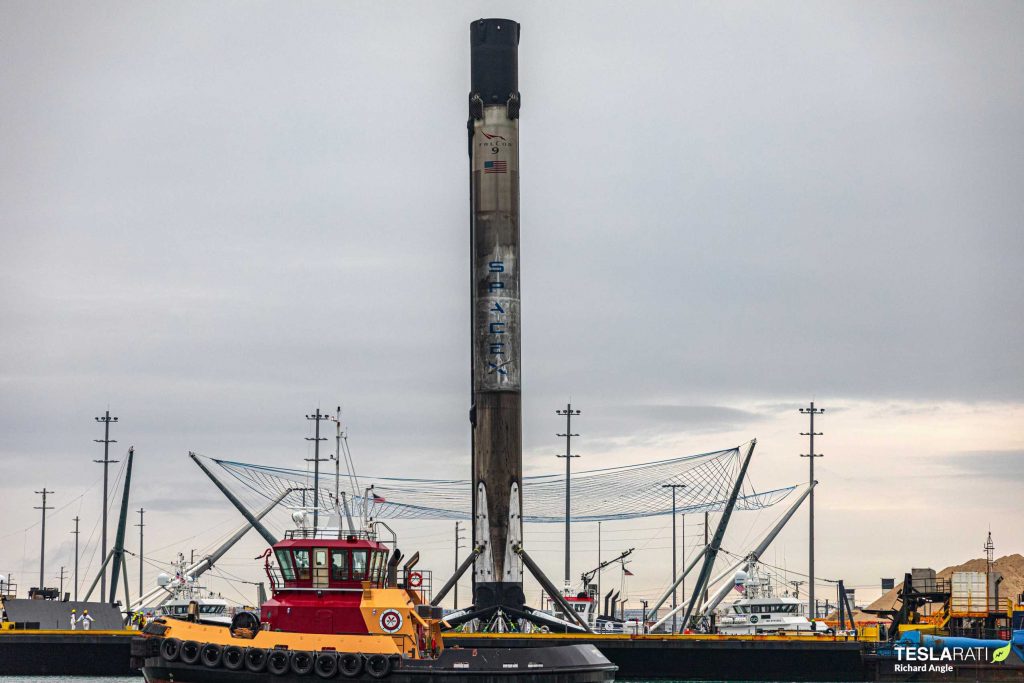

According to CEO Elon Musk, the ultimate cost of a flight-proven Falcon 9 launch can be as low as $15 million – excluding overhead but including a new upper stage, booster recovery, propellant, and other miscellaneous costs. As such, a single 60-satellite Starlink launch likely costs SpaceX less than $30 million total, meaning that an average of five small satellites (base price: $1 million per slot) manifested on a Starlink launch would save SpaceX ~17% every time.
Regardless, Falcon 9 booster B1051 is scheduled to become the third SpaceX rocket to launch five times when it lifts off for Starlink-9 no earlier than (NET) 4:39 pm EDT (20:39 UTC) on June 25th, a delay of three days from the original June 22nd target.
Check out Teslarati’s Marketplace! We offer Tesla accessories, including for the Tesla Cybertruck and Tesla Model 3.

Elon Musk
Elon Musk and Tesla AI Director share insights after empty driver seat Robotaxi rides
The executives’ unoccupied tests hint at the rapid progress of Tesla’s unsupervised Robotaxi efforts.

Tesla CEO Elon Musk and AI Director Ashok Elluswamy celebrated Christmas Eve by sharing personal experiences with Robotaxi vehicles that had no safety monitor or occupant in the driver’s seat. Musk described the system’s “perfect driving” around Austin, while Elluswamy posted video from the back seat, calling it “an amazing experience.”
The executives’ unoccupied tests hint at the rapid progress of Tesla’s unsupervised Robotaxi efforts.
Elon and Ashok’s firsthand Robotaxi insights
Prior to Musk and the Tesla AI Director’s posts, sightings of unmanned Teslas navigating public roads were widely shared on social media. One such vehicle was spotted in Austin, Texas, which Elon Musk acknowleged by stating that “Testing is underway with no occupants in the car.”
Based on his Christmas Eve post, Musk seemed to have tested an unmanned Tesla himself. “A Tesla with no safety monitor in the car and me sitting in the passenger seat took me all around Austin on Sunday with perfect driving,” Musk wrote in his post.
Elluswamy responded with a 2-minute video showing himself in the rear of an unmanned Tesla. The video featured the vehicle’s empty front seats, as well as its smooth handling through real-world traffic. He captioned his video with the words, “It’s an amazing experience!”
Towards Unsupervised operations
During an xAI Hackathon earlier this month, Elon Musk mentioned that Tesla owed be removing Safety Monitors from its Robotaxis in Austin in just three weeks. “Unsupervised is pretty much solved at this point. So there will be Tesla Robotaxis operating in Austin with no one in them. Not even anyone in the passenger seat in about three weeks,” he said. Musk echoed similar estimates at the 2025 Annual Shareholder Meeting and the Q3 2025 earnings call.
Considering the insights that were posted Musk and Elluswamy, it does appear that Tesla is working hard towards operating its Robotaxis with no safety monitors. This is quite impressive considering that the service was launched just earlier this year.
Elon Musk
Starlink passes 9 million active customers just weeks after hitting 8 million
The milestone highlights the accelerating growth of Starlink, which has now been adding over 20,000 new users per day.

SpaceX’s Starlink satellite internet service has continued its rapid global expansion, surpassing 9 million active customers just weeks after crossing the 8 million mark.
The milestone highlights the accelerating growth of Starlink, which has now been adding over 20,000 new users per day.
9 million customers
In a post on X, SpaceX stated that Starlink now serves over 9 million active users across 155 countries, territories, and markets. The company reached 8 million customers in early November, meaning it added roughly 1 million subscribers in under seven weeks, or about 21,275 new users on average per day.
“Starlink is connecting more than 9M active customers with high-speed internet across 155 countries, territories, and many other markets,” Starlink wrote in a post on its official X account. SpaceX President Gwynne Shotwell also celebrated the milestone on X. “A huge thank you to all of our customers and congrats to the Starlink team for such an incredible product,” she wrote.
That growth rate reflects both rising demand for broadband in underserved regions and Starlink’s expanding satellite constellation, which now includes more than 9,000 low-Earth-orbit satellites designed to deliver high-speed, low-latency internet worldwide.
Starlink’s momentum
Starlink’s momentum has been building up. SpaceX reported 4.6 million Starlink customers in December 2024, followed by 7 million by August 2025, and 8 million customers in November. Independent data also suggests Starlink usage is rising sharply, with Cloudflare reporting that global web traffic from Starlink users more than doubled in 2025, as noted in an Insider report.
Starlink’s momentum is increasingly tied to SpaceX’s broader financial outlook. Elon Musk has said the satellite network is “by far” the company’s largest revenue driver, and reports suggest SpaceX may be positioning itself for an initial public offering as soon as next year, with valuations estimated as high as $1.5 trillion. Musk has also suggested in the past that Starlink could have its own IPO in the future.
News
NVIDIA Director of Robotics: Tesla FSD v14 is the first AI to pass the “Physical Turing Test”
After testing FSD v14, Fan stated that his experience with FSD felt magical at first, but it soon started to feel like a routine.

NVIDIA Director of Robotics Jim Fan has praised Tesla’s Full Self-Driving (Supervised) v14 as the first AI to pass what he described as a “Physical Turing Test.”
After testing FSD v14, Fan stated that his experience with FSD felt magical at first, but it soon started to feel like a routine. And just like smartphones today, removing it now would “actively hurt.”
Jim Fan’s hands-on FSD v14 impressions
Fan, a leading researcher in embodied AI who is currently solving Physical AI at NVIDIA and spearheading the company’s Project GR00T initiative, noted that he actually was late to the Tesla game. He was, however, one of the first to try out FSD v14.
“I was very late to own a Tesla but among the earliest to try out FSD v14. It’s perhaps the first time I experience an AI that passes the Physical Turing Test: after a long day at work, you press a button, lay back, and couldn’t tell if a neural net or a human drove you home,” Fan wrote in a post on X.
Fan added: “Despite knowing exactly how robot learning works, I still find it magical watching the steering wheel turn by itself. First it feels surreal, next it becomes routine. Then, like the smartphone, taking it away actively hurts. This is how humanity gets rewired and glued to god-like technologies.”
The Physical Turing Test
The original Turing Test was conceived by Alan Turing in 1950, and it was aimed at determining if a machine could exhibit behavior that is equivalent to or indistinguishable from a human. By focusing on text-based conversations, the original Turing Test set a high bar for natural language processing and machine learning.
This test has been passed by today’s large language models. However, the capability to converse in a humanlike manner is a completely different challenge from performing real-world problem-solving or physical interactions. Thus, Fan introduced the Physical Turing Test, which challenges AI systems to demonstrate intelligence through physical actions.
Based on Fan’s comments, Tesla has demonstrated these intelligent physical actions with FSD v14. Elon Musk agreed with the NVIDIA executive, stating in a post on X that with FSD v14, “you can sense the sentience maturing.” Musk also praised Tesla AI, calling it the best “real-world AI” today.








